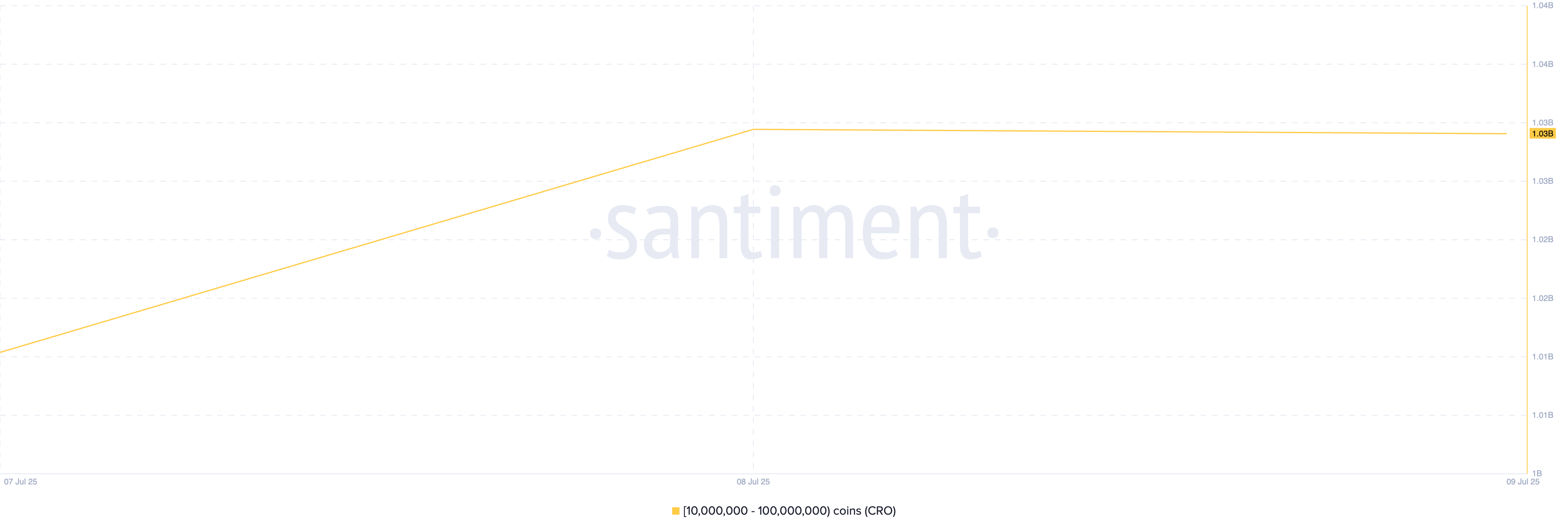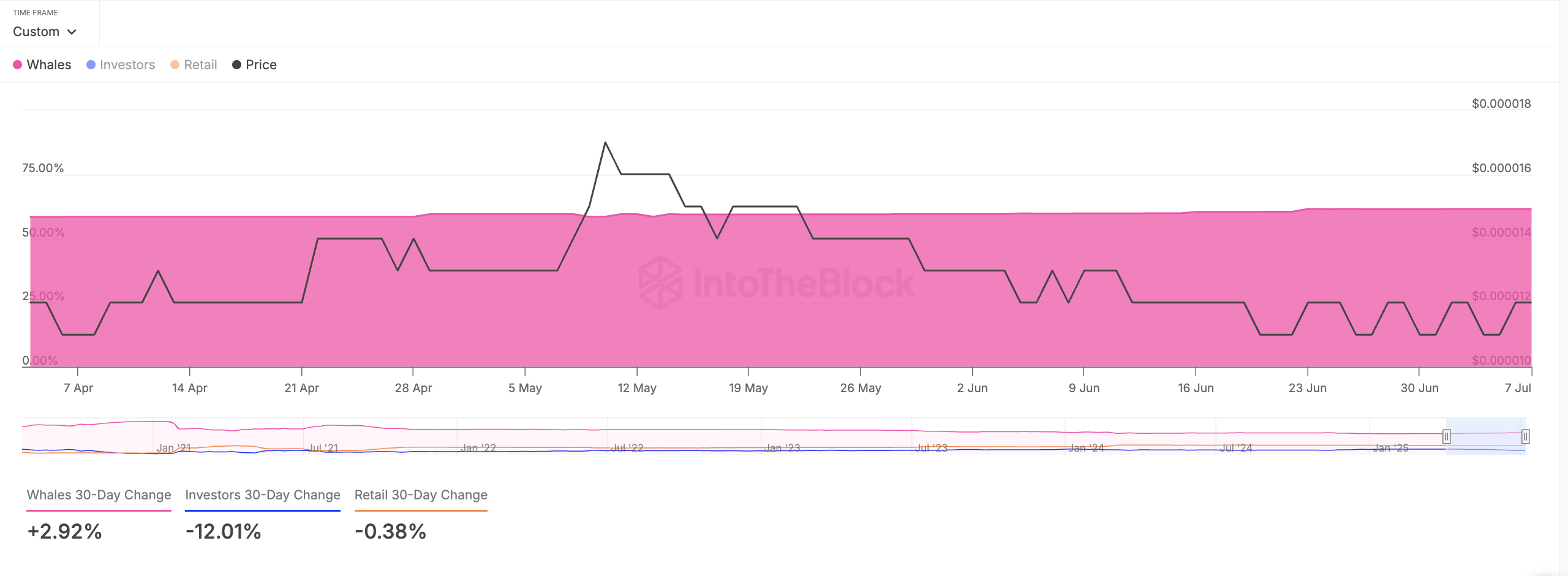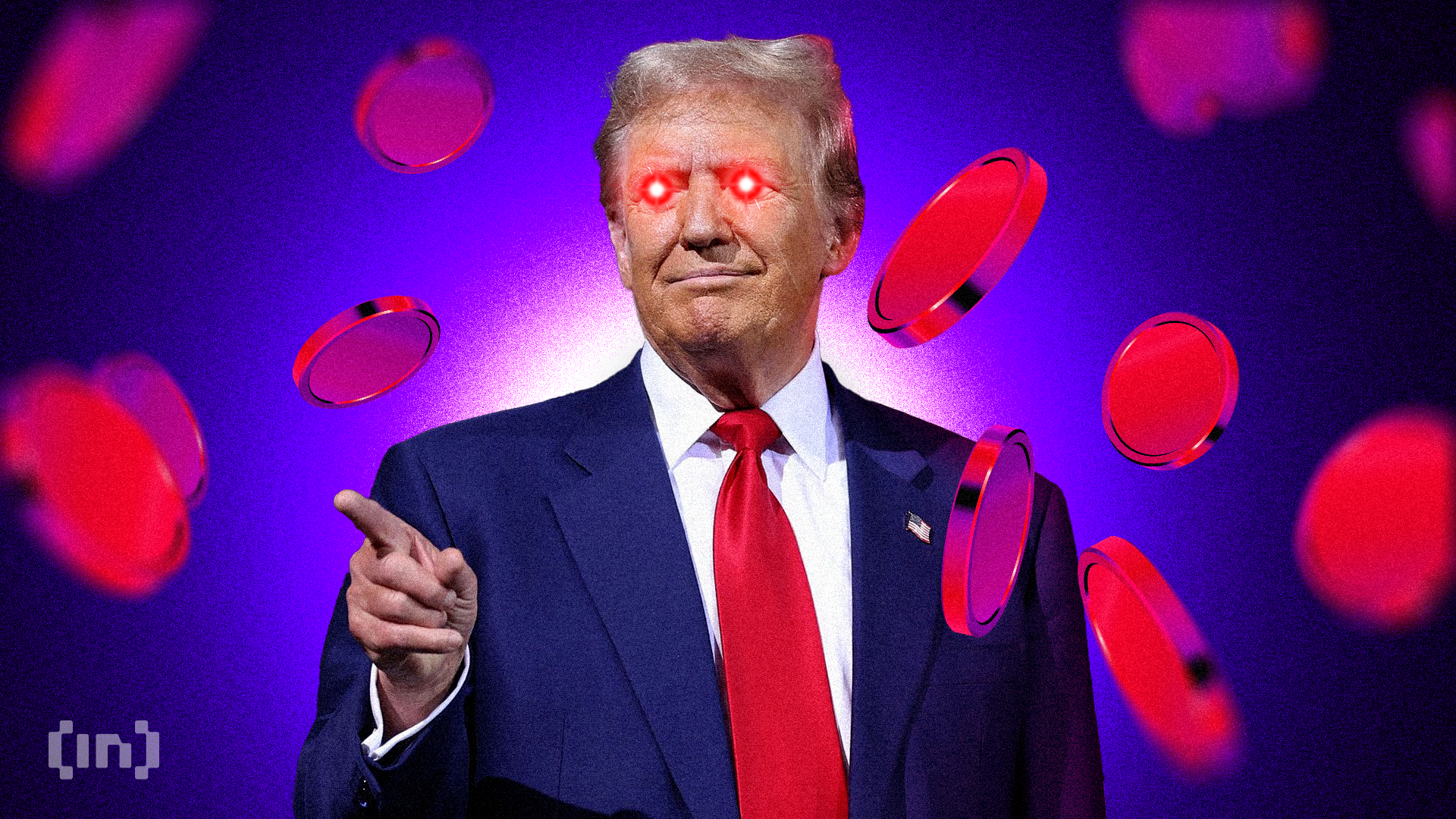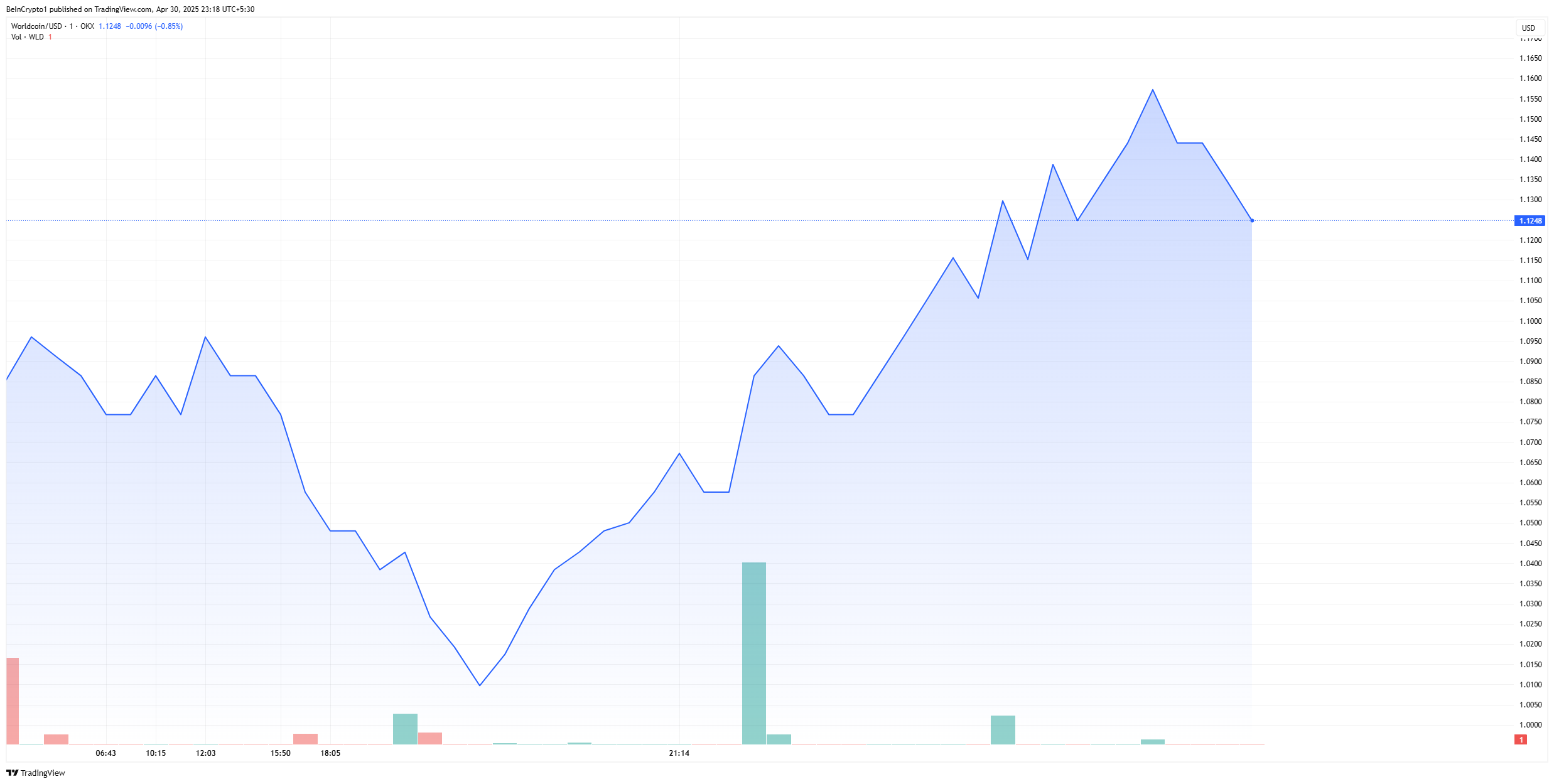The US Senate Banking Committee is scheduled to hold a hearing today. Top lawmakers will meet with Ripple CEO Brad Garlinghouse and other key industry figures to discuss the evolving structure of digital asset markets.
Amid rising anticipation of more regulatory clarity, crypto whales appear to be making bold plays. On-chain data shows that large investors have ramped up the accumulation of CRO, SHIB, and BONK.
Cronos (CRO)
CRO, the native token of the Cronos Chain, has already made headlines this week after Trump Media & Technology Group named it in a proposed ETF.
On Tuesday, the company submitted a filing for a new exchange-traded fund (ETF) named the “Truth Social Crypto Blue Chip ETF. ” The fund will hold a diversified portfolio of five cryptocurrencies: Bitcoin (BTC), Ethereum (ETH), Solana (SOL), XRP, and CRO.
This has triggered renewed investor interest in the coin. The combination of ETF-related momentum and anticipation of more regulatory clarity has led to a noticeable uptick in whale confidence.
According to data from Santiment, large CRO holders—wallets holding between 10 million and 100 million tokens—have accumulated an additional 20 million CRO over the past two days, bringing their total holdings to 1.03 billion coins.

If this trend of whale accumulation continues, it could provide the bullish momentum needed to push CRO’s price toward the $0.104 mark in the near term.
However, if profit-taking commences, CRO’s price could fall to $0.085
Shiba Inu (SHIB)
Leading meme coin SHIB is among the assets that crypto whales are buying ahead of today’s Senate hearing.
Per IntoTheBlock, SHIB’s Historical Concentration shows a 3% increase in holdings by addresses with more than 1% of the coin’s total circulating supply. This means that the largest holders are tightening their grip on the meme coin, a sign of growing confidence among major investors.
As of press time, this whale cohort collectively holds 62% of SHIB’s total supply, amounting to 603.30 trillion tokens.

Typically, buying activity from large holders is seen as a vote of confidence. It prompts smaller investors to follow suit in fear of missing out (FOMO). As SHIB whales tighten their grip on the supply, the resulting scarcity can create upward price pressure, pushing its price toward $0.000013.
However, if bullish momentum wanes, SHIB could lose some recent gains to trade at $0.000011.
Bonk (BONK)
The recent spike in activity on Bonk’s decentralized meme coin launchpad LetsBonk has sparked renewed demand for the token among both retail and whale investors. As excitement builds ahead of today’s US Senate hearing on digital assets, whale accumulation of BONK remains firmly underway.
According to data from Moby Screener, 11 whales have executed 70 large trades within the past 24 hours. Of these, 39 are buy transactions, totaling 3.17 billion BONK tokens, compared to 31 sells totaling just 172.14 million tokens.

This has resulted in a net positive flow of 3 billion BONK over the past day. The accumulation trend confirms that whales are positioning ahead of a potential policy shift, signaling increased confidence in BONK’s near-term outlook.
The post What Crypto Whales Are Buying Ahead of Senate Hearing appeared first on BeInCrypto.




